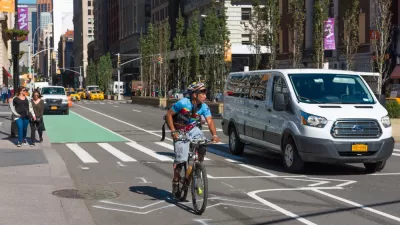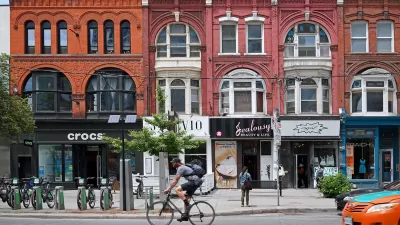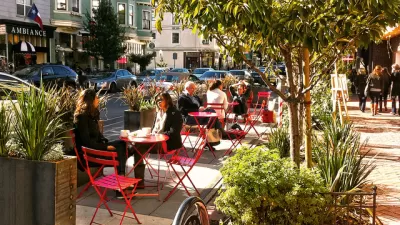The Regional Plan Association is calling on New York City to implement an ambitious plan to transform the city into a world class city for biking—for the benefit of the public health and economic realities of the pandemic and beyond.

The Regional Plan Association (RPA) released a plan for a Five Borough Bikeway this week, calling for a revolution in the management and use of streets in the city of New York.
"We need to develop a network of priority, high-capacity, protected bike lanes that serve as the heart of a comprehensive and cohesive bicycle network," according to the RPA.
The report commences from a discussion about the quiet of city streets during the stay-at-home orders of the pandemic and the emergence of the bicycle as a preferred method of transportation during the trouble early months of the crisis.
As work and travel restrictions are gradually lifted, NYC’s infrastructure will need to handle growing numbers of travelers in ways that ensure more space per person. There is also a wide consensus on the need for additional federal support for infrastructure spending to stimulate economic activity and development. One of the best ways to get NYC up and moving again quickly, and with peace of mind, would be through the proliferation of bike lanes that are laid out in this report.
The plan lays out a phased implementation plan, which would start with planters and bollards before laying the long-term cornerstones of a strategy to reduce greenhouse gas emissions in the city. The entire Five Borough Bikeway would span 425 miles of continuous, protected bike infrastructure.
The Five Borough Bikeway Plan is available in its entirety on the RPA's website.
FULL STORY: The Five Borough Bikeway

Trump Administration Could Effectively End Housing Voucher Program
Federal officials are eyeing major cuts to the Section 8 program that helps millions of low-income households pay rent.

Planetizen Federal Action Tracker
A weekly monitor of how Trump’s orders and actions are impacting planners and planning in America.

Ken Jennings Launches Transit Web Series
The Jeopardy champ wants you to ride public transit.

Washington Legislature Passes Rent Increase Cap
A bill that caps rent increases at 7 percent plus inflation is headed to the governor’s desk.

From Planning to Action: How LA County Is Rethinking Climate Resilience
Chief Sustainability Officer Rita Kampalath outlines the County’s shift from planning to implementation in its climate resilience efforts, emphasizing cross-departmental coordination, updated recovery strategies, and the need for flexible funding.

New Mexico Aging Department Commits to Helping Seniors Age ‘In Place’ and ‘Autonomously’ in New Draft Plan
As New Mexico’s population of seniors continues to grow, the state’s aging department is proposing expanded initiatives to help seniors maintain their autonomy while also supporting family caregivers.
Urban Design for Planners 1: Software Tools
This six-course series explores essential urban design concepts using open source software and equips planners with the tools they need to participate fully in the urban design process.
Planning for Universal Design
Learn the tools for implementing Universal Design in planning regulations.
Heyer Gruel & Associates PA
Ada County Highway District
Institute for Housing and Urban Development Studies (IHS)
City of Grandview
Harvard GSD Executive Education
Toledo-Lucas County Plan Commissions
Salt Lake City
NYU Wagner Graduate School of Public Service





























